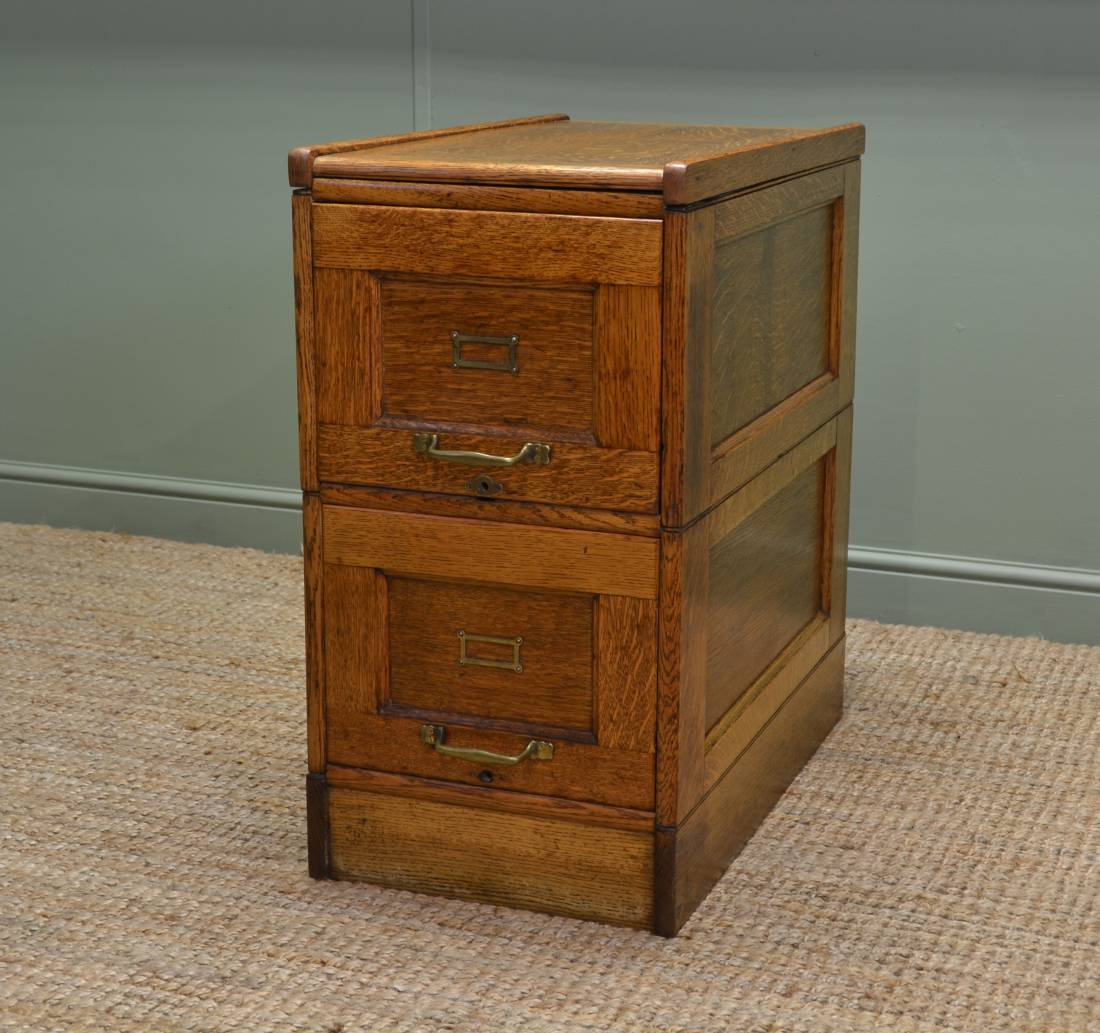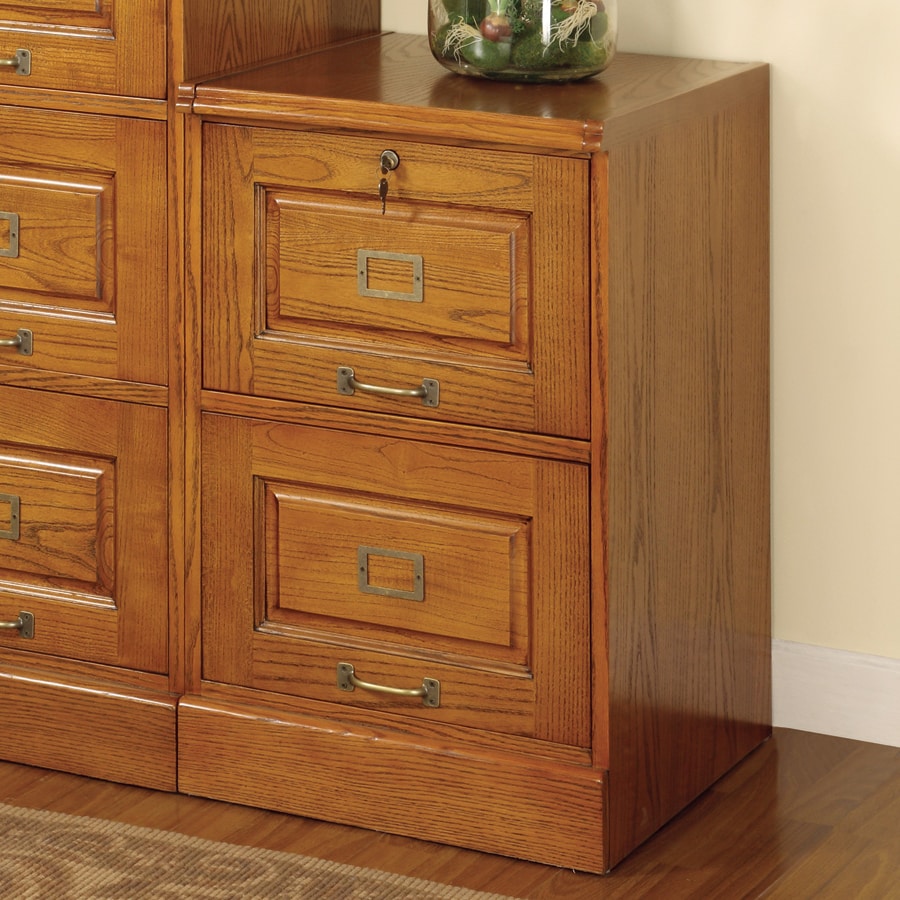Antique Oak File Cabinet History and Style

Antique oak file cabinets, with their timeless elegance and enduring craftsmanship, represent a fascinating chapter in the history of furniture design. These cabinets have evolved over time, reflecting changing tastes and technological advancements, while retaining their core functionality and enduring appeal.
Origins and Evolution
The origins of the file cabinet can be traced back to the late 19th century, when the need for organized record-keeping became increasingly important in the burgeoning business world. Early file cabinets were often simple, utilitarian pieces made from wood or metal. As the 20th century progressed, file cabinets became more sophisticated, incorporating features such as drawers, suspension systems, and locking mechanisms. The popularity of oak as a material for furniture during this period contributed to the rise of antique oak file cabinets.
Craftsmanship and Techniques
Antique oak file cabinets are distinguished by their meticulous craftsmanship and attention to detail. Carpenters used traditional woodworking techniques, such as mortise and tenon joinery, to create sturdy and durable cabinets. The use of solid oak wood, known for its strength and beauty, ensured that these cabinets would withstand the test of time. Many antique oak file cabinets feature intricate carvings, decorative hardware, and hand-rubbed finishes that enhance their aesthetic appeal.
Distinctive Qualities
Antique oak file cabinets possess a number of distinctive qualities that set them apart from other types of antique furniture. Their robust construction, timeless design, and enduring functionality make them both practical and aesthetically pleasing. The warm, rich tones of oak wood add a touch of elegance to any room. The craftsmanship and attention to detail evident in these cabinets are a testament to the skill and artistry of the woodworkers who created them.
Styles and Variations
Antique oak file cabinets come in a wide range of styles, reflecting the diverse tastes and preferences of different eras. Some common styles include:
- Mission Style: Characterized by its simple, functional design, often with a focus on clean lines and natural materials.
- Arts and Crafts Style: Emphasizes handcrafted elements and natural materials, with a focus on functionality and simplicity.
- Art Deco Style: Known for its geometric patterns, bold colors, and use of exotic materials.
- Victorian Style: Features ornate carvings, elaborate details, and a focus on decorative elements.
Comparison with Other Antique Furniture
While antique oak file cabinets share some similarities with other types of antique furniture, they also possess unique qualities that distinguish them. Unlike antique dressers or chests, file cabinets are designed specifically for storage and organization. Their sturdy construction and multiple drawers make them ideal for storing important documents and records. Compared to antique desks, file cabinets offer a more focused and dedicated space for filing and organizing paperwork.
Preservation and Restoration
Antique oak file cabinets are valuable pieces of furniture that can be enjoyed for generations to come. Proper preservation and restoration are essential for maintaining their beauty and functionality. Regular cleaning, polishing, and refinishing can help to protect the wood and preserve its natural luster.
Antique Oak File Cabinet Features and Uses: Antique Oak 2 Drawer File Cabinet

Antique oak file cabinets are more than just functional storage solutions; they are pieces of history that embody craftsmanship and style. These cabinets possess distinctive features and have served diverse purposes throughout their existence, making them valuable additions to any home or office.
Construction and Design Elements
Antique oak file cabinets showcase meticulous craftsmanship and attention to detail. Their construction often involves solid oak wood, known for its durability and natural beauty. The drawers are typically constructed with dovetail joints, a traditional woodworking technique that ensures strength and longevity. The hardware, including handles, pulls, and hinges, is often made of brass or bronze, adding to the aesthetic appeal and historical character. These cabinets may also feature decorative elements like carvings, moldings, or inlays, reflecting the design trends of their era.
Practical Uses
Antique oak file cabinets have served a variety of practical purposes throughout history. Their primary function has always been to store and organize documents, files, and important papers. In the past, they were commonly used in offices, libraries, and homes to maintain order and protect valuable information. Today, they continue to serve this purpose in modern settings, offering a stylish and functional way to organize paperwork.
Incorporating Antique Oak File Cabinets into Interior Design, Antique oak 2 drawer file cabinet
Antique oak file cabinets can seamlessly blend into various interior design styles, adding a touch of history and sophistication. In traditional settings, they complement period furniture and décor, enhancing the overall aesthetic. They can also serve as focal points in contemporary spaces, adding warmth and character to minimalist or modern interiors. For a more rustic or farmhouse style, antique oak file cabinets can be paired with distressed wood furniture and natural textures.
Examples of Use in Different Interior Design Styles
- Traditional: An antique oak file cabinet with ornate carvings and brass hardware can be placed in a library or study, alongside a leather armchair and a mahogany desk.
- Contemporary: A sleek, minimalist antique oak file cabinet with simple lines and metal accents can be used in a modern office or home office, complementing a glass desk and chrome chairs.
- Rustic: An antique oak file cabinet with a distressed finish can be paired with a farmhouse table and chairs, creating a cozy and welcoming atmosphere in a kitchen or dining room.
Antique Oak File Cabinet Value and Care

Antique oak file cabinets, with their timeless elegance and sturdy construction, can be valuable additions to any home or office. Their value is influenced by a combination of factors, including age, condition, maker, and style. Understanding these factors can help you determine the worth of your antique file cabinet and make informed decisions about its care.
Factors Influencing Value
The value of an antique oak file cabinet is determined by several key factors.
- Age: Generally, older file cabinets are more valuable, especially those dating back to the late 19th or early 20th centuries. The age of a file cabinet can be determined by its style, construction techniques, and any markings or labels it may have.
- Condition: The condition of an antique file cabinet plays a significant role in its value. Cabinets in excellent condition, with minimal wear and tear, are more valuable than those with significant damage or restoration.
- Maker: The maker of an antique file cabinet can also influence its value. File cabinets produced by renowned furniture makers or companies known for their craftsmanship often command higher prices.
- Style: The style of an antique file cabinet can also impact its value. Cabinets with unique or sought-after styles, such as Arts and Crafts or Mission Revival, tend to be more valuable.
Authenticating Antique Oak File Cabinets
Distinguishing authentic antique oak file cabinets from reproductions can be challenging, but there are several key indicators to consider.
- Construction: Authentic antique file cabinets are often constructed with traditional joinery techniques, such as dovetail joints and mortise and tenon joints. Reproductions may use less traditional methods, such as glue and staples.
- Hardware: Antique file cabinets typically have original hardware, such as handles, hinges, and drawer pulls, that may show signs of age and wear. Reproductions may have newer hardware that looks out of place.
- Wood: Antique oak file cabinets are often made from solid oak, which can be identified by its grain pattern and color. Reproductions may use less expensive wood or veneer.
- Finish: Antique file cabinets typically have a natural finish that has aged over time. Reproductions may have a newer, more uniform finish.
Caring for Antique Oak File Cabinets
Proper care is essential for preserving the beauty and value of your antique oak file cabinet.
- Dusting: Regularly dust your file cabinet with a soft, dry cloth. Avoid using harsh chemicals or abrasive cleaners.
- Polishing: If your file cabinet has a waxed finish, polish it with a high-quality furniture polish specifically designed for antique furniture. Avoid using polishes that contain silicone, as they can damage the finish.
- Sunlight: Avoid exposing your file cabinet to direct sunlight, as it can fade the finish.
- Humidity: Maintain a stable humidity level in the room where you store your file cabinet. Extreme humidity can cause wood to warp or crack.
- Temperature: Keep your file cabinet away from heat sources, such as radiators or fireplaces. Extreme temperatures can also cause wood to warp or crack.
The antique oak 2 drawer file cabinet, a relic of a bygone era, whispers tales of meticulous organization and the enduring power of wood. Its sturdy construction speaks of a time when things were built to last, a stark contrast to the fleeting disposability of modern times.
Imagine its presence in a grand office, filled with documents and secrets, its drawers holding the threads of history. This timeless piece, much like the antique china cabinet 1930s with its delicate curves and intricate details, evokes a sense of nostalgia, a yearning for a simpler time.
The antique oak 2 drawer file cabinet, however, holds a different kind of charm, one that speaks of efficiency and practicality, a silent sentinel of the past.
The antique oak 2 drawer file cabinet stands as a testament to a bygone era, its sturdy construction whispering tales of meticulous craftsmanship. Yet, even the most robust of structures can succumb to the relentless march of time, and the need for organization extends beyond mere files.
For those grappling with a burgeoning shoe collection, a large shoe cabinet uk offers a haven of order, much like the antique oak file cabinet once provided for documents. The antique oak file cabinet may hold secrets of the past, but the large shoe cabinet promises a future free from the chaos of scattered footwear.
